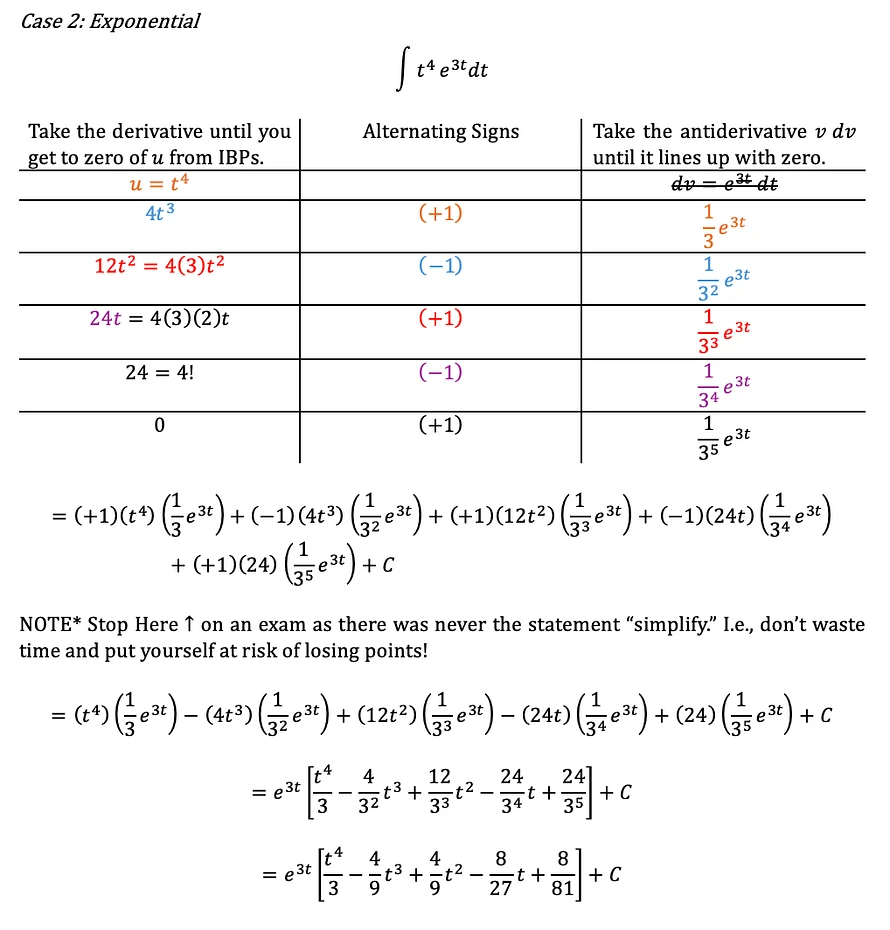Tabular Method for Exponential Integration – Case Study: ∫ t⁴·e³ᵗ dt
This post features a visual breakdown of solving ∫ t⁴·e³ᵗ dt using the Tabular Method—a powerful shortcut for repeated Integration by Parts. This is one of the cleanest, fastest ways to solve integrals where one term reduces to zero and the other accumulates antiderivatives, especially with polynomial-exponential combinations.
In this example:
-
The left column shows the step-by-step derivatives of t⁴ until it reaches 0.
-
The right column builds up the antiderivatives of e³ᵗ, each divided by an additional 3.
-
The middle column alternates the signs (+, −, +, −, ...).
-
The final expression is constructed by multiplying and combining each derivative–antiderivative pair with its corresponding sign.
This image also includes a reminder: don’t simplify unless explicitly told to on an exam—a valuable test-taking strategy to save time and avoid unnecessary errors.
This visual is straight from the Ultimate Crash Course for STEM Majors. If you're a student in Calculus 1 or 2, this guide makes complex integration techniques more approachable.
Get the full PDF guide and access all updates here:
https://author-jonathan-david-shop.fourthwall.com
Grab the full crash course bundle here:
https://author-jonathan-david-shop.fourthwall.com/products/the-ultimate-crash-course-includes-bonus-ultimate-cheat-sheet-800-pages-of-goodness
Search tags: tabular integration exponential, integration by parts shortcut, ∫ t⁴·e³ᵗ dt solution, tabular IBP method, exponential integration calculus, fast integration trick, college calculus integration method, advanced integration visual aid, polynomial exponential integral.

